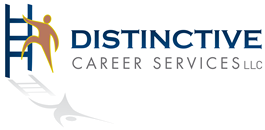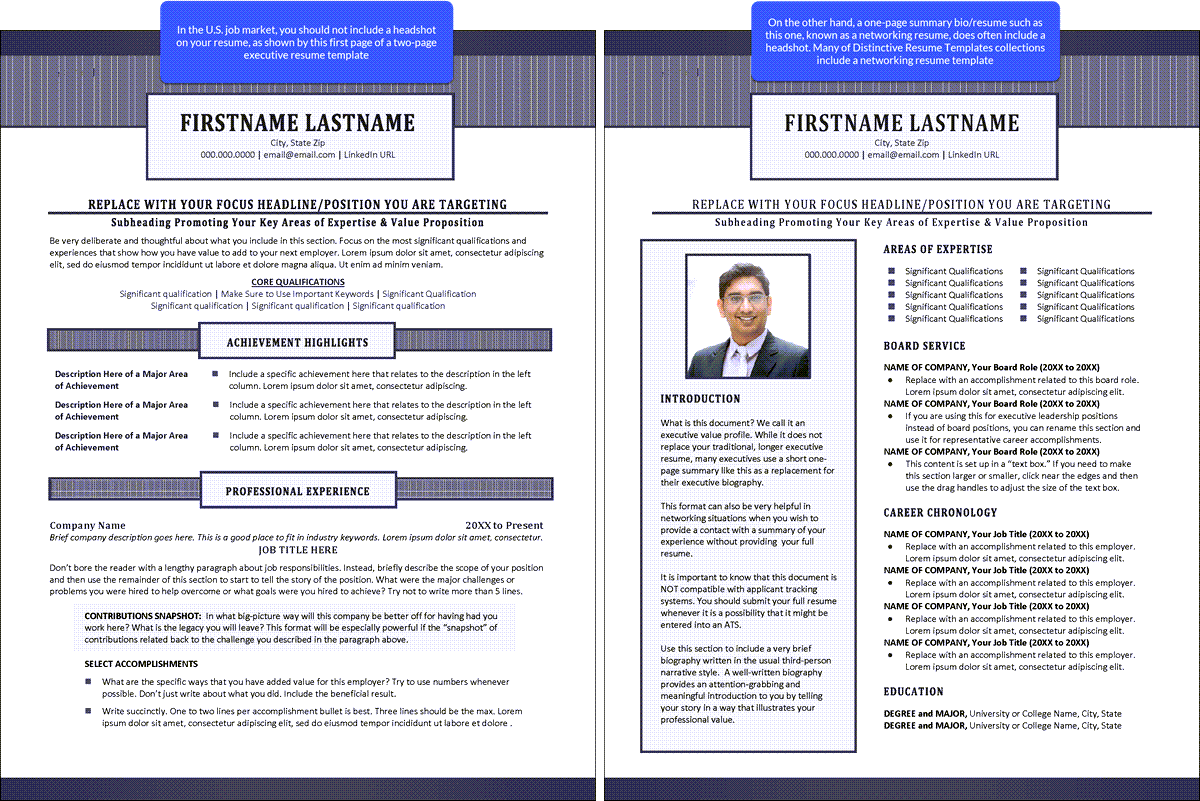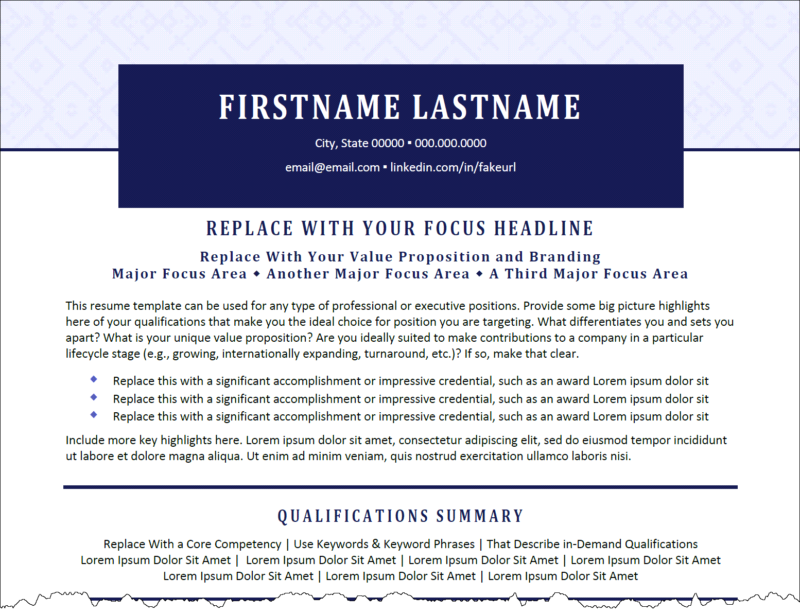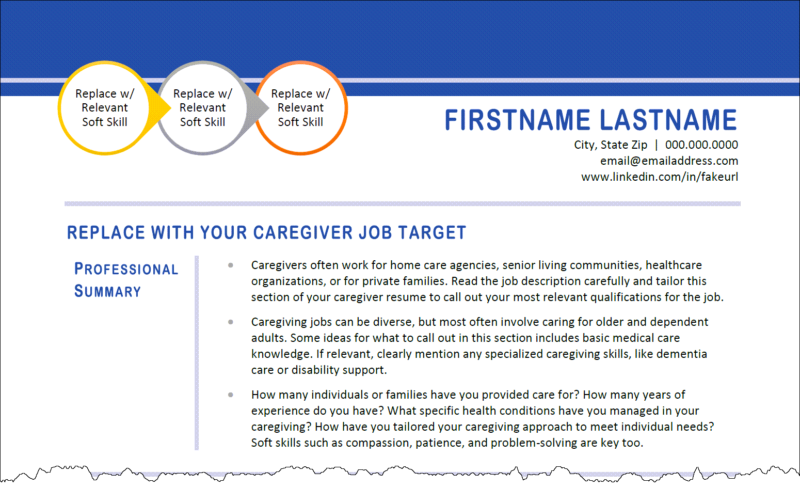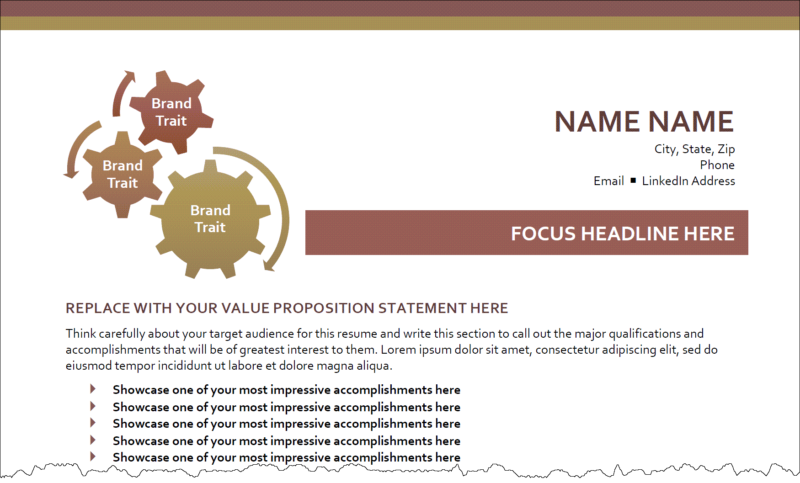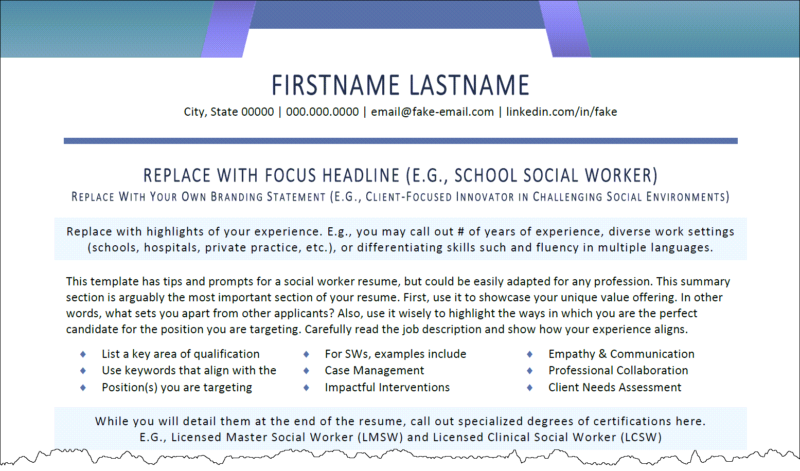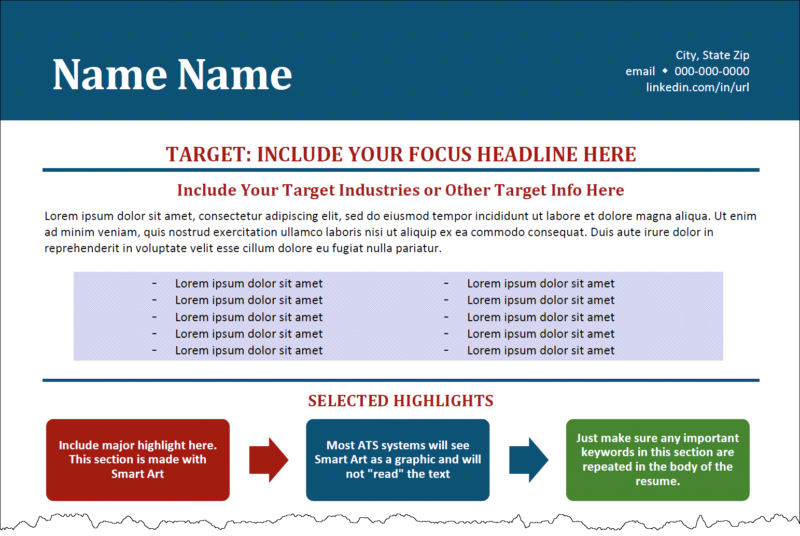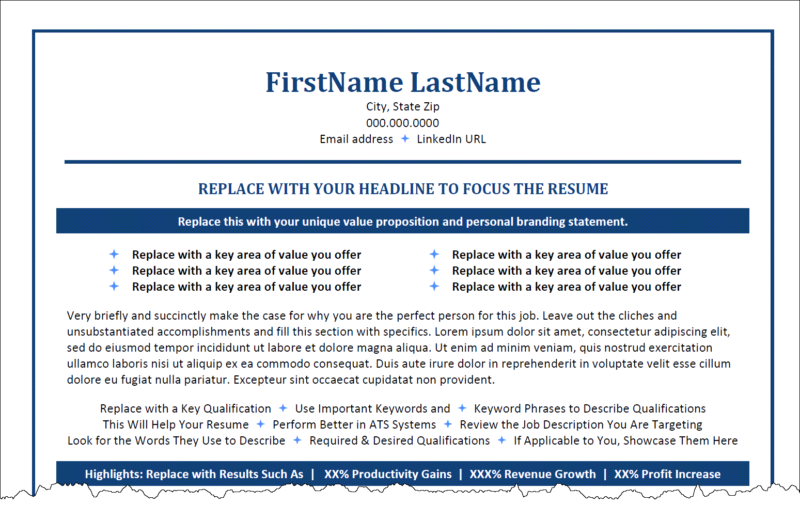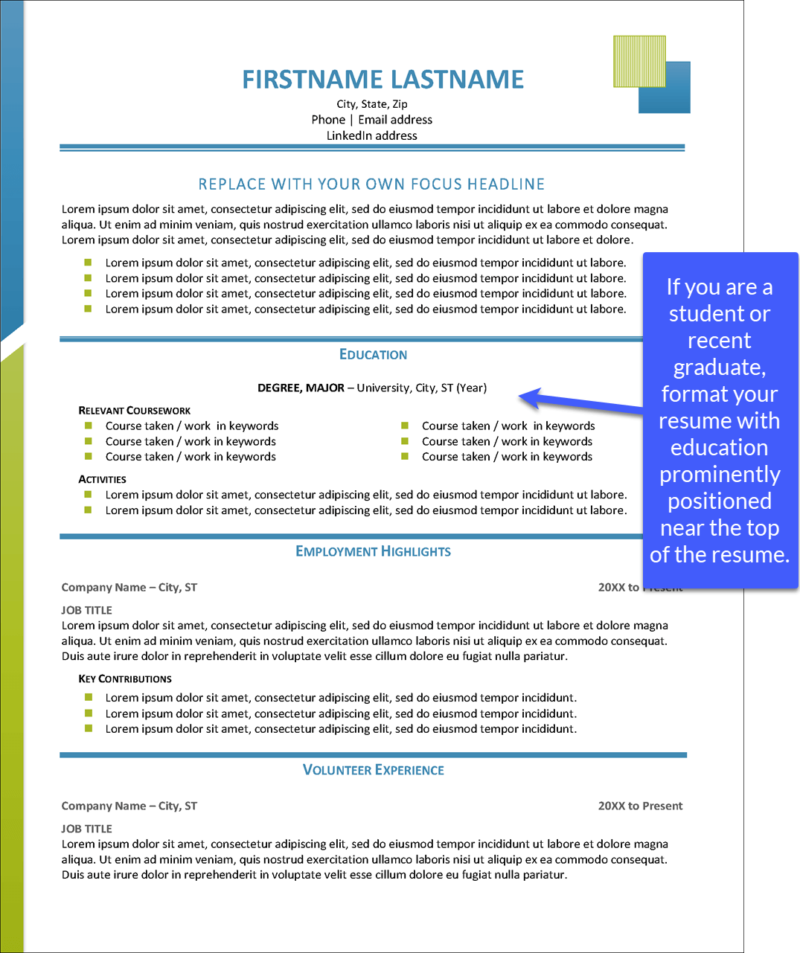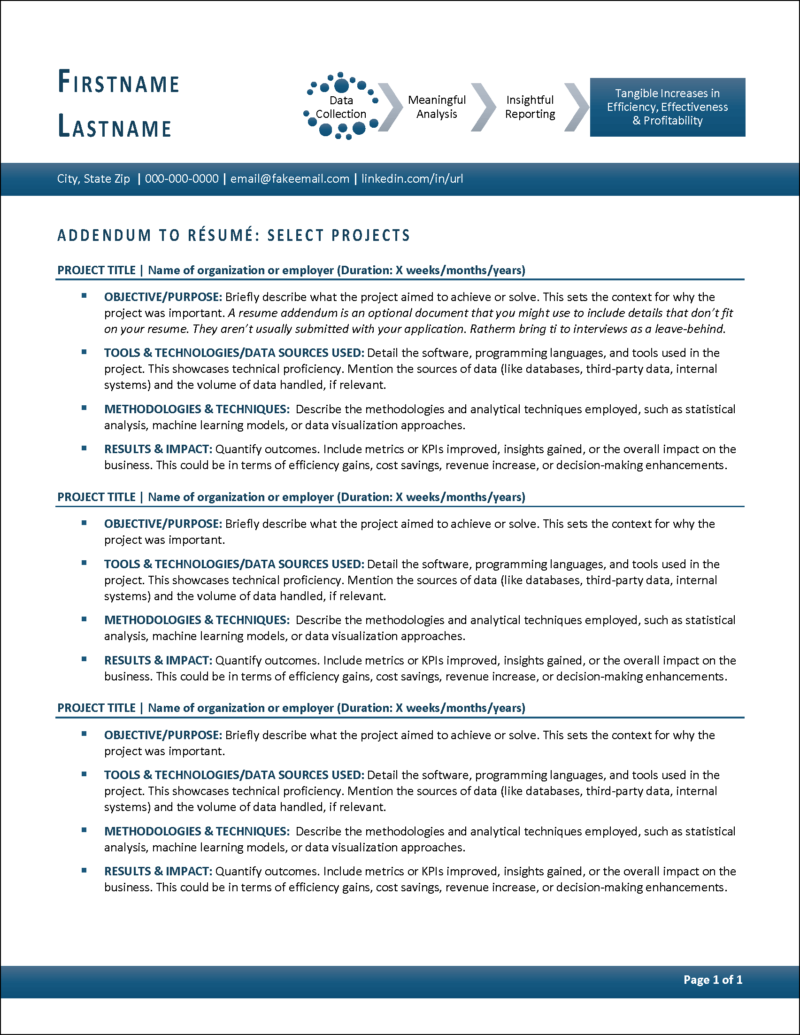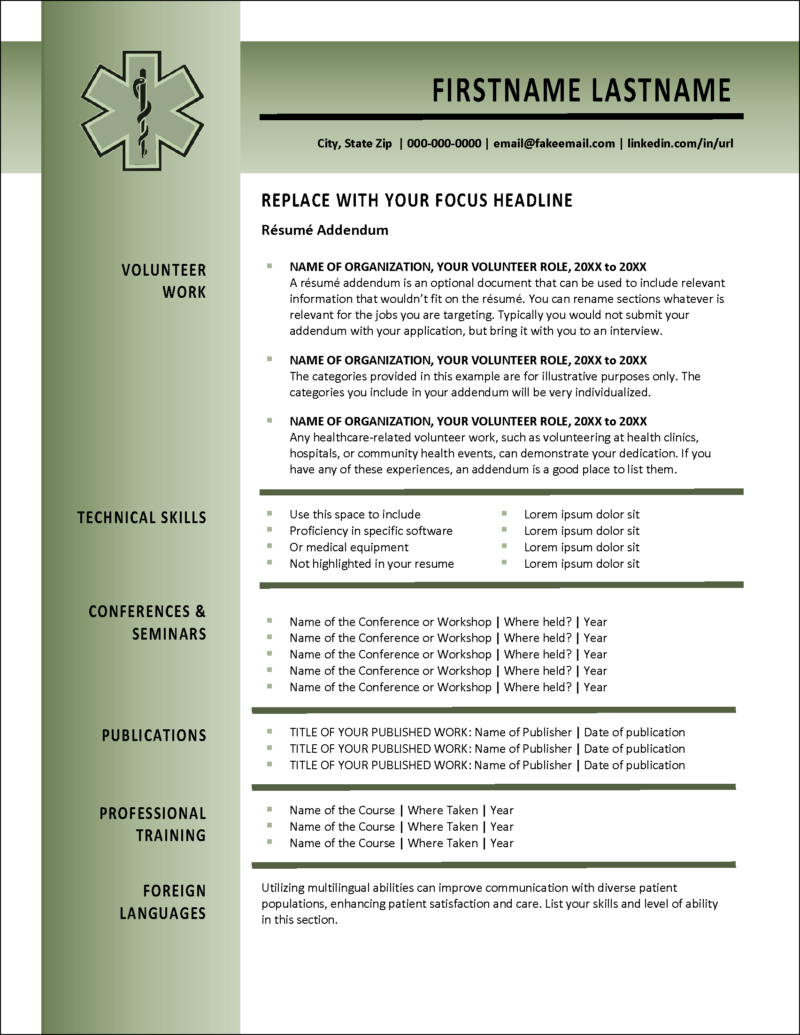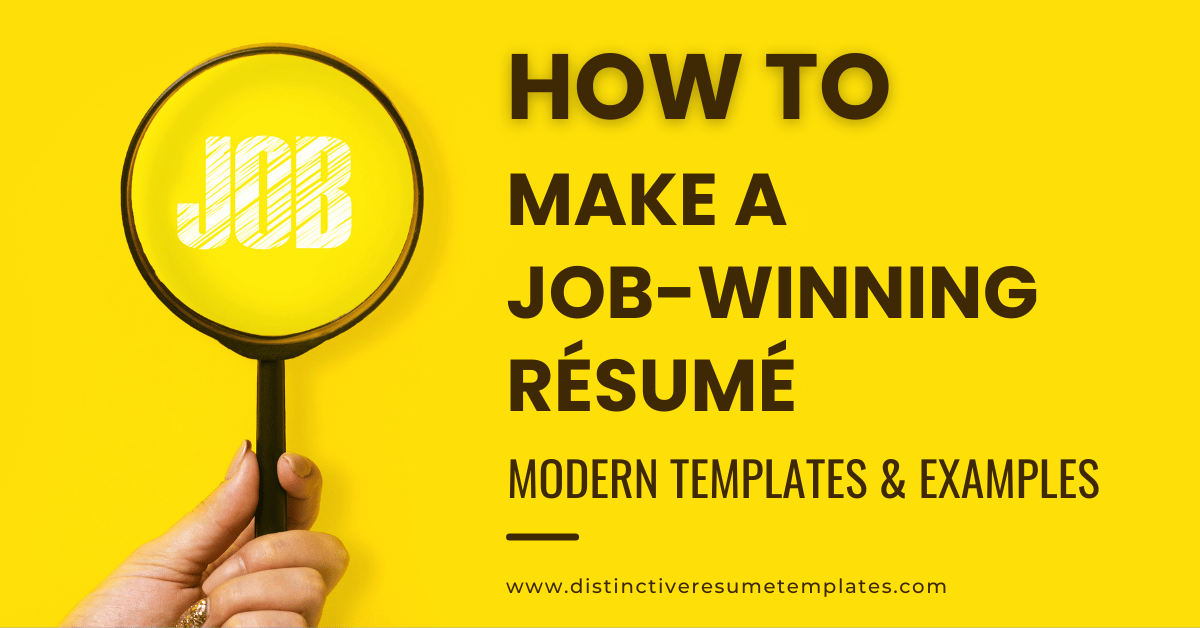
Making a resume can feel overwhelming, right? Whether you’re crafting your first resume or updating the one that helped you land your last job, figuring out where to start is challenging for most job seekers.
But here’s some good news: you don’t have to go at it alone. We’re here to offer you straightforward, practical advice, peppered with expert examples and resume templates you can download that make creating a resume fast and easy. Our goal is to simplify the process, making it simple for you to create a resume that not only looks great but also opens doors to new opportunities.
Key Takeaways
The Foundation of Making a Resume
When it comes to crafting your own resume, it’s easy to feel overwhelmed with the wealth of advice out there. Should you opt for a chronological resume format or a functional one? Or maybe a combination of both would serve you best? What should you include, and what should you exclude? How long should it be? What should your resume look like? Your questions about how to make a resume might stop you before you start.
But remember, procrastination isn’t your ally in this journey. The key to landing the job you want is to waste no time in creating a well-structured, up-to-date resume that showcases your skills, experience, and academic background.
Mastering the art of resume creation is a crucial step towards achieving professional success, as a well-crafted resume can open doors to your ideal job. The significance of your resume cannot be overstated – it’s a vital document in your career journey.
Combined with the expert resume tips in this article, the resume templates and examples in this post will make creating your own resume fast and easy, whether it’s your first resume or you’re updating information from your previous company.
Crafting Your Resume’s Focus
A great resume isn’t just about pulling out all your career accomplishments and resume file (if you don’t have one of these, you should start one right away) and listing all your skills and experiences. It’s about tailoring them to fit the job you’re applying for.
That’s where your resume focus comes in. Maintaining a clear focus in your resume can prevent it from being dismissed at first glance by a hiring manager.
Defining a targeted job search objective that clearly articulates your professional level and desired industry or company type is crucial before even beginning to draft your resume. This should be clearly presented, usually as a headline to the professional summary section of your resume.
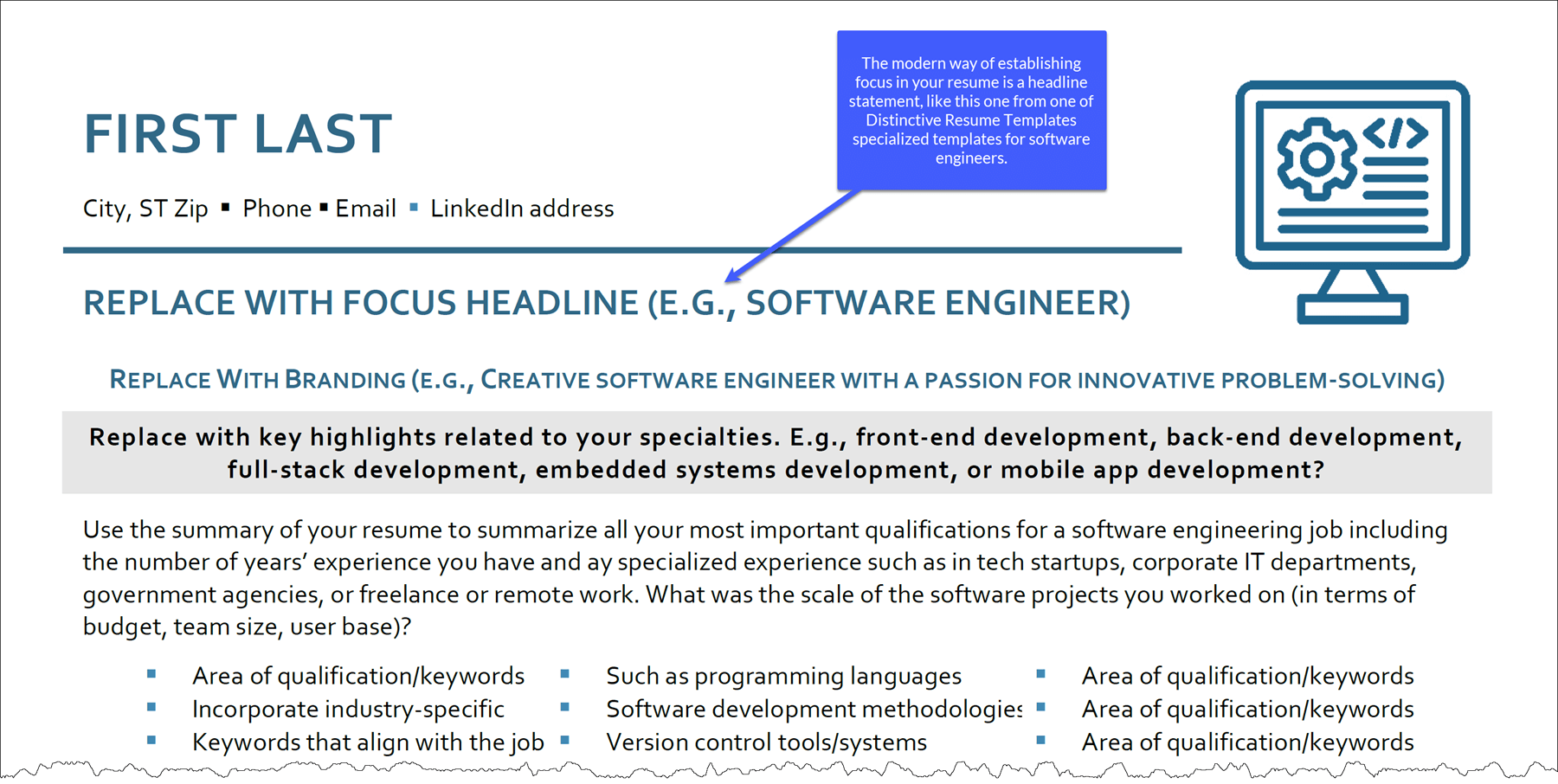
Of course, no single resume will be right for every job. The solution? Tailor your resume to the opportunity before applying. Every component of your resume must be consistent with the established focus. Resumes lacking focus may prolong your job search and reduce its success. Therefore, it’s vital to remove any irrelevant or unnecessary information, while highlighting pertinent achievements.
Choosing the Right Resume Format
Selecting the right resume format is as crucial as choosing the right key to unlock a door. It’s about selecting a format that will present your skills and experiences in an accessible way that resonates with both hiring managers and Applicant Tracking Systems (ATS). There are primarily three resume formats to choose from: chronological, functional, and hybrid/combination variations.
A resume format that includes a work history presented in reverse chronological order is favored by employers for its straightforward display of job history and career growth. This is also a great format for maximizing ATS compatibility.
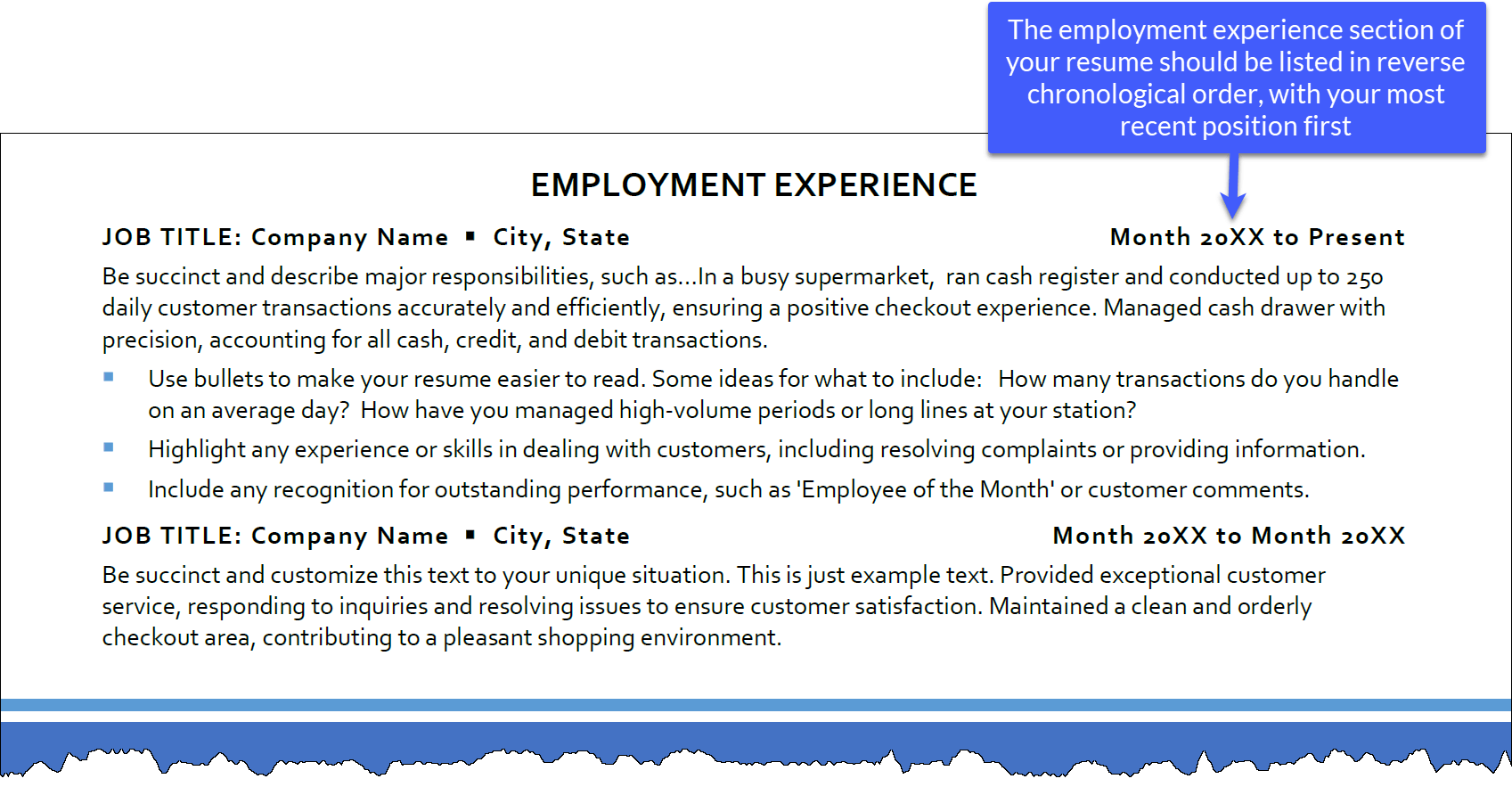
Functional resumes, on the other hand, focus on skills and minimize the emphasis on work history. This can be useful for those with limited experience or employment gaps and for people making a career change. On the downside, many recruiters and employers don’t like functional resumes, and they can also cause problems with ATS compatibility.
Combination resumes blend the best of both the chronological and functional formats, giving you a way to showcase transferable skills and achievements. Resumes made in this format:
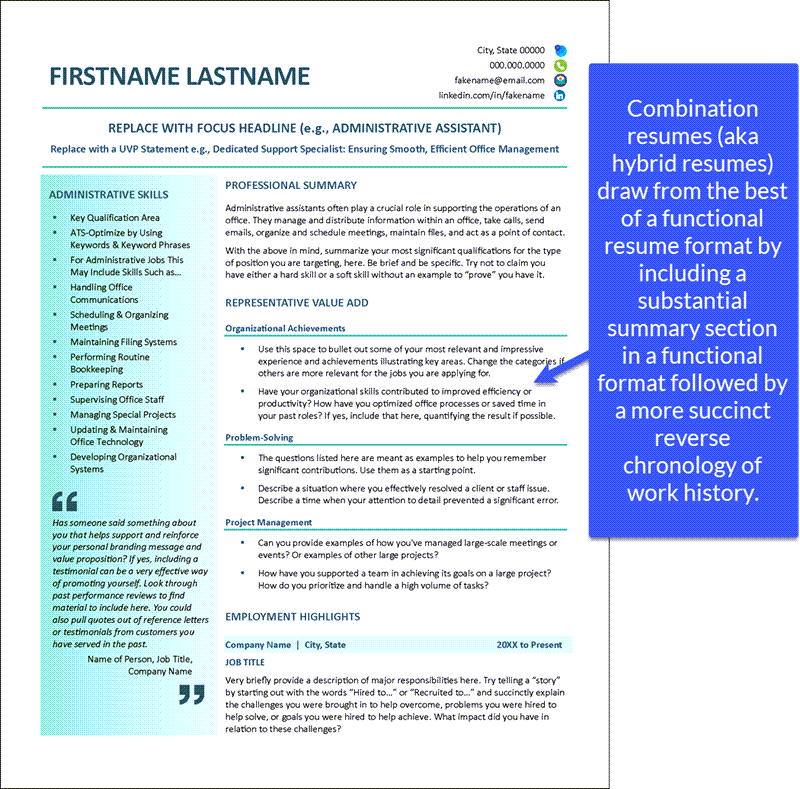
Personal Contact Information Essentials
Your personal contact information is an essential part of your resume. It may seem like an elementary step, but many job seekers get it wrong. Including your full name, address, phone number, and professional email address in the header of your resume allows hiring managers to find and contact you easily.
In the U.S., you should not include a personal headshot on your resume or any other personal details like birth year that could lead to age discrimination. However, details like this are common and expected in some international job markets.
Distinctive Resume Templates have been created in the U.S. style, with no photo. However, many of the collections include an optional bundle of coordinating templates such as professional bios, and some of the collections include a template for a “networking resume” that can be used in situations in which providing your longer resume wouldn’t be appropriate (such as networking meetings). These networking resume templates do include space for a photograph. Our best advice: research your local job market and do whatever is the best practice where you are applying.
Additionally, modern resumes should include the URL to your LinkedIn profile and any other relevant details to connect with you on other social media platforms. These should only be included if they are relevant and professional; do not include a link to a Facebook profile, for example, if you use Facebook for socializing rather than for professional purposes.
If your resume includes a second page, make sure to include your name and at least a phone number or other way for an employer to reach you in the header of the second page. This is important in case the pages get separated, and it also makes it super easy for a recruiter to pick up the phone and call you.
Writing an Engaging Resume Summary
Your resume summary is arguably the most important section of your resume, setting the tone and focus for the entire document. Use it to highlight your best and most relevant qualifications and to showcase how you stand out from other applicants for the same job.
Although it may be tempting to write this section first, many expert resume writers recommend leaving it until last. Once the body of your resume is written, you can write your summary to do precisely what the name implies: use it to summarize the key points of the resume.
A good resume summary, alongside the entire resume, should be structured to convey your main value proposition at first glance. Here are some tips to help you create a strong resume summary:
- 1
Select and highlight key skills relevant to the job you are applying for.
- 2
Infuse the summary with notable and measurable achievements.
- 3
Customize the resume summary for each job application by including relevant keywords.
- 4
Showcase how your experiences align with the needs of the employer.
You have many options for the format of this section. Once you have selected your resume template, just follow the outline for the summary in the template. The following are just a few of the endless options available in our portfolio of MS Word resume templates. Click on each to see it larger.
Example Resume Summary # 1
From our Experience Plus collection, a resume template for experienced professionals and executives
Example Resume Summary # 2
From our Nurturing Care Collection a specialized resume template for caregivers of all types
Example Resume Summary # 3
From our Authentic Elements Collection, a versatile resume template suitable for almost any job seeker
Example Resume Summary # 4
A specialized resume template for social workers from our Career Care Collection of templates
Example Resume Summary #5
A stylish resume template for professionals from the widely popular customer favorite Ambitscape Collection
Example Resume Summary #6
From the Elite Star Collection a resume template designed to help you write a STAR format resume
By following these tips, you can create a compelling resume summary that makes your resume stand out, grabbing the attention of potential employers.
Tailoring Your Summary to the Job Description
Customization is the secret ingredient to crafting an intriguing professional summary. It’s not enough to list your skills and experiences; you need to align them with the job description of the position you’re applying for. Begin by identifying critical keywords and phrases from the job description to tailor the resume to match the job you’re applying for.
Include details about experiences and skills that align with the job posting’s highlighted requirements. Remember, a customized resume for the specific job application improves your chances of securing an interview. This is worth the time whether the opening is for your dream job or not. Utilize resume templates to effectively tailor sections and include job-specific keywords and skills, as they offer intuitive interfaces for customization.
Showcasing Work Experience Effectively
Your work experience forms the core of your resume. It’s where you demonstrate your skills in action and provide tangible proof of your abilities.
List work experience entries in reverse chronological order, starting with the most recent job, to display career progression clearly. Emphasize achievements in work experience versus just listing responsibilities. This allows you to demonstrate the impact and value you have brought to past roles.
Keep in mind that hiring managers are less interested in your designated duties and responsibilities. They care about what you did–as in what you accomplished—and, more to the point, how your accomplishments benefited your past employers.
Tailor the work experience section to the specific job by using keywords from the job posting to demonstrate that your skills and accomplishments align with the role’s requirements.
Highlighting Achievements in Bullet Points
Designing your resume with bullet points is a highly effective method for highlighting your accomplishments. These allow you to concisely present your accomplishments and draw the reader’s attention to your most impressive achievements and contributions.
Use the formula ‘Action Verb + Results + Action that Produced the Result’ to construct front-loaded achievement-focused bullet points. This enables you to show your abilities or traits instead of just claiming to have them. For example:
-
Increased sales 20% through the implementation of a new customer relationship management system.
Quantify the results of achievements, such as percentage growth or dollar amounts, to demonstrate the tangible impact of your actions. For example:
-
Led a team to improve customer service processes.
vs.
-
Reduced customer service response times 30% and improved customer satisfaction scores 15% as results of leading a team of 5 in revamping customer service processes.
For current job positions, use present tense action verbs, and for past positions, use past tense to accurately reflect the timing.
Enhance bullet points by including an interesting context and by converting responsibilities into achievements using the STAR method, showing how tasks led to positive outcomes.
Demonstrating Educational Prowess
Especially for recent graduates or those with minimal work experience, your academic background forms a significant part of your resume. Education should be listed in reverse chronological order, starting with the highest degree obtained. Consistency in formatting and conciseness are essential in the education section, allowing for ease of reference and readability.
More experienced candidates may include less detail in the education section to ensure that it complements rather than overshadows their work experience. For students and entry-level candidates the education section may be featured more prominently and precede the work experience on the resume.
Recent graduates can depict their academic qualifications by detailing relevant projects that demonstrate their capabilities to apply theoretical knowledge in practical scenarios.
For non-graduates, including expected graduation dates or the number of credit hours completed, along with relevant coursework, can still provide insight into their academic progress and focus areas.
Skills Section: Your Professional Know-How
The skills section of your resume offers an opportunity to display your professional expertise prominently. Analyze job descriptions and align your resume with the required skills and keywords. This can improve your chances of your resume performing well in keyword searches of applicant tracking systems, as well as attracting hiring managers’ attention.
Presenting a blend of industry-specific technical skills and general abilities is imperative. Some key transferable skills to highlight in your resume include:
Make sure to provide examples of how you have demonstrated these skills in past jobs or other experiences.
Filter relevant skills by brainstorming a comprehensive list of all your skills. Then, compare this list with the specific skills mentioned in the job ad to ensure alignment with the position’s requirements.
Hard Skills vs. Soft Skills
Hard skills are specific, teachable abilities or skill sets that are easily quantifiable, such as proficiency in a foreign language or computer programming.
Soft skills, also known as people skills or interpersonal skills, refer to how you relate to and interact with other people. Examples include empathy, communication, and flexibility.
While hard skills are often specific to a job or industry, soft skills are transferable across various jobs and sectors. Employers seek candidates with both hard and soft skills.
Including a balanced mix of hard and soft skills in the resume summary can illustrate to employers a comprehensive skill set.
The Added Value of Additional Resume Sections
Incorporating additional sections enhances your resume by offering a broader perspective of your abilities, sometimes extending beyond work experience and education.
Highlighting multi-lingual abilities on a resume, for example, can increase a candidate’s appeal, especially for positions within international corporations or communities with diverse languages.
Incorporating volunteer experience on a resume can demonstrate a candidate’s commitment and personal values, and for those with less professional experience, it can serve as a valuable stand-in.
Awards and recognitions offer concrete evidence of a candidate’s excellence and distinction in their field. Linking to published works directly on a resume can establish a candidate’s authority in their field and highlight their contributions to relevant topics.
Including essential certifications related to one’s specialty or industry-specific licenses showcases your expertise and commitment to continuous learning, which is highly valued by hiring managers.
However, ensure that your resume isn’t unnecessarily overloaded with these extra sections. Ideally, your complete resume should be no longer than two pages. If you find yourself running over two pages, consider moving some of these extra sections to a resume addendum.
Designing a Visually Appealing Resume
The design of your resume, akin to a book cover, is the initial element that grabs the reader’s attention. It needs to be eye-catching and facilitate an easy read, making the content more engaging for the reader. A visually appealing resume is more likely to be remembered and shared, increasing a candidate’s chances of standing out in a pool of applicants.
Designing your resume has never been easier when you use a professionally designed resume template from Distinctive Resume Templates.
Choosing the right resume template is key to meeting industry expectations and enhancing your career prospects by presenting information in a way that resonates with employers.
Distinctive Resume Templates provides a variety of modern, stylish resume templates that reflect the latest design trends, while maintaining ATS compatibility, enabling job seekers to choose a design that fits their industry and job application needs.
Consideration of the resume layout in terms of organization, length, and visual elements tailored to industry standards is key to creating a document that is both professional and appealing.
Crafting a Persuasive Cover Letter
A thoughtfully composed cover letter serves as an excellent accompaniment to your resume. It provides context and a more personal introduction to you as a candidate and should be kept brief, following an organized three-paragraph structure. Using a letterhead for your cover letter that matches the resume design ensures you present a cohesive, consistent, branded image.
To create an effective cover letter, follow these tips:
- 1
Relate your skills and experience to the job requirements.
- 2
Show genuine interest in the role.
- 3
Address the cover letter to the specific hiring manager.
- 4
Demonstrate your suitability for the position by providing quantifiable achievements and specific examples from past roles.
- 5
Confidently promote unique strengths and showcase why you’re an ideal candidate.
- 6
Avoid restating details from your resume.
- 7
Don’t ignore application instructions.
By following these guidelines, you can create a strong and compelling cover letter.
Making Your Resume ATS-Friendly
Many (maybe even most) companies employ Applicant Tracking Systems (ATS) for an efficient hiring process. Hence, it’s crucial to ensure your resume is formatted correctly for ATS and includes relevant keywords to improve its performance in these systems.
There are many outdated myths about ATS standards. To ensure your professional resume meets modern ATS standards, follow these tips:
- 1
Use an ATS-friendly resume template from Distinctive Resume Templates.
- 2
Check for formatting correctness and ensure the resume is submitted in .doc, .docx, or .pdf format for ATS compatibility.
- 3
Tailor the resume summary by including keywords from the job description.
- 4
Avoid keyword stuffing, but consider repeating important keywords two to three times throughout the resume and in context to demonstrate skill proficiency.
- 5
Match the language and hard skills from the job description exactly, avoiding synonyms or abbreviations that the ATS might not recognize.
Proofreading: The Final Touch Before Submission
As you approach completion, don’t underestimate the importance of the final stage: proofreading. Proofreading your resume is essential as it can significantly reduce your chances of landing a job if it contains:
Reading the resume line by line and word by word is an effective way to catch missing or duplicate words and misused terms. Reading out loud or backward can reveal issues with grammar or syntax. Getting an independent editor or someone knowledgeable to review your resume can provide a valuable external perspective on any writing issues.
When submitting the resume, if not specified, save it in .DOC or .DOCX Microsoft Word file format to ensure ATS compatibility, but otherwise, a PDF file is preferable to preserve formatting.
Using Resume Templates: The Modern Resume Builder
Distinctive Resume Templates serve as today’s most advanced go-to resume builder. Unfortunately, many templates on the market are not ATS friendly, don’t follow resume writing best practices, and are inflexible and hard or impossible to customize. Be wary of these!
Distinctive Resume Templates, on the other hand, are professionally designed by an award-winning resume writer and aren’t just ATS friendly; they follow all modern resume best practices and are easily customized for your unique situation. They streamline the resume creation process significantly, saving time by allowing users to:
A resume template aids in generating uniformly formatted documents, which is crucial when submitting resumes electronically. Many of our resume templates even offer expert tips and prompts in the template itself to help individuals tailor their resumes appropriately.
Final Resume Building Tips & Advice
In summary, it’s clear there’s a lot more to making a resume than just listing your skills and experiences on a page. It’s about being sharp, making it your own, speaking to the employers’ needs, telling a narrative story of success, and really nailing the appearance. Think about it: you’ve got to get your resume’s focus just right, pick the best layout, write a summary that grabs attention, highlight your work and education, and also make sure it gets along with those tricky applicant tracking systems. Every step matters if you want your resume to stand out.
So, when you’re on the hunt for a new job, remember your resume is like your personal billboard expressing your professional brand. It’s your chance to shine, showing off what makes you different and what you’ve achieved. It’s about telling your story in a way that’s all you. With the right focus, layout, and flair, your resume won’t just get you in the door for an interview—it’ll help you land the job of your dreams.
Frequently Asked Questions
How do I start making my resume?
To start making your resume, begin by reflecting on the job you’re aiming for and identifying the skills and experiences you possess that align with it. Select a resume layout that highlights your strengths—whether it’s your continuous work history or diverse skills—and begin to fill in your information. Consider including a headline or summary at the top that clearly states your career goals and the value you bring to potential employers.
What are the different resume formats?
There are three main resume formats: chronological, functional, and hybrid. The chronological format lists your jobs from the most recent back and is great if you have a strong work history. The functional format focuses more on your skills and is useful if you’re changing careers or have gaps in your employment. The hybrid format combines elements of both, letting you showcase both your skills and your work history. Choose the one that best represents your experiences and strengths in relation to the job you’re applying for.
How important is it to customize my resume for each job?
Customizing your resume for each job ad is crucial. It shows employers that you’re seriously interested in the position and have taken the time to align your experience with what they’re looking for. Use keywords from the job listing to tailor your resume. This not only makes your resume more relevant but also helps it pass through Applicant Tracking Systems (ATS) that many companies use to filter applications.
How can I make my work experience stand out on my resume?
Your resume should highlight your achievements in previous roles, rather than just listing tasks. Use specific examples and quantify your successes with numbers or percentages to demonstrate the impact you had. For instance, if you improved efficiency, state how much time or money was saved as a result. This approach shows the potential hiring manager the value you could bring to their organization.
What's an ATS, and how do I make my resume ATS-friendly?
An Applicant Tracking System (ATS) is software that helps companies manage and filter incoming resumes. To make your resume ATS-friendly, use a straightforward format and include relevant keywords from the job description. Unless you have an up-to-date understanding of ATS standards, it is smart to use an ATS-friendly template to create your resume. Save your resume in a format that the system can easily read, like a Microsoft Word .DOCX or PDF.
Should I include a cover letter with my resume?
Absolutely! A cover letter complements your resume by offering additional insights into your experiences and personality. It’s your opportunity to explain why you’re passionate about the job and how your unique skills make you the right fit. Address the letter to the hiring manager by name and keep it concise, highlighting key achievements that align with the job requirements.
What are some dos and don'ts for my resume's design?
Do choose a clean, professional design that makes your resume easy to read at a glance. Do bullet point your achievements and keep margins and font sizes consistent. Don’t overload your resume design with too many colors or fonts, as this can distract from the content. A well-designed resume template can help you maintain a balance between style and substance.
How long should my resume be?
Your resume should ideally be one to two pages long, depending on your experience level. Recent graduates or those with less experience should aim for one page, while more seasoned professionals can extend to two pages if necessary. Ensure every piece of information you include is relevant to the job you’re applying for to maintain conciseness and relevance.
How do I make a resume when I don't have any work experience?
If you’re making a resume without work experience, focus on your skills, education, and any extracurricular activities or volunteer work you’ve done. Highlight projects or coursework that demonstrate relevant skills, and use your summary to explain your career goals and the unique perspective you bring. Remember, everyone starts somewhere, and employers are often looking for potential and a willingness to learn. Distinctive Resume Templates offers specialized templates for a high school resume for teens, for graduating students, and for applying for an entry-level position.
Does a good resume have to be focused?
Yes, a good resume needs to be focused. It should clearly reflect your career goals and be tailored to the specific job you’re applying for. A focused resume shows employers that you understand what they’re looking for and that you have the skills and experience that align with their needs. Including a resume objective statement is considered an outdated practice. Instead, to maintain focus, include a focus headline, highlight the experiences and achievements most relevant to the job, and minimize or omit unrelated information. This approach not only makes your resume stronger but also helps hiring managers quickly see why you’re a good fit for the position.
Is a curriculum vitae (CV) the same thing as a resume?
A CV is not the same as a resume, although people often use the terms interchangeably. In the United States, a professional resume is a concise document, typically one to two pages long, tailored for a specific job, highlighting skills, education, and experience. A curriculum vitae, on the other hand, is a more detailed and comprehensive document used primarily in academic, scientific, or research settings. It covers your entire career, including education, work experience, publications, presentations, awards, and other accomplishments, and does not usually have a page limit.
